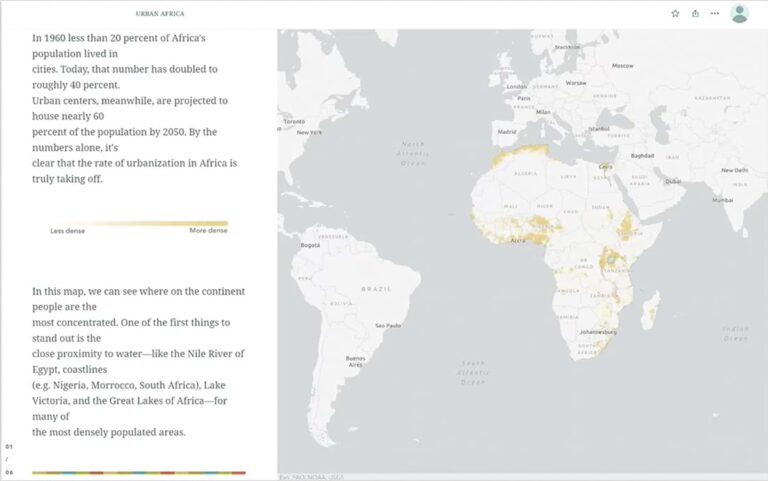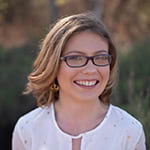Monroe Community College (MCC) in Rochester, New York—with a campus of more than 12,000 students—has shaped its coursework to ensure that it meets the emerging needs of students in the field of GIS technology. For over five years, the college has offered courses in introductory GIS technology, remote sensing, cartography, and spatial analysis. Its GIS offerings also include a capstone course as part of an online, 24-credit Geospatial Information Science and Technology (GIST) certificate program and an associate of applied sciences (AAS) degree in GIST.
In light of the quickly growing geospatial technology job market, MCC launched an additional nine-credit microcredential program in 2021 to keep pace with modern GIS skills.
“When it comes to modern GIS, these courses are touching on what is new in this industry—problems like streamlining GIS workflows, using dashboards, and how to create or modify scripts,” said Nia Beazer, a recent MCC graduate. “We’ve dabbled in a little bit of everything, which has prepared me so much for my future in this industry.”
Students can either enroll in three classes to earn the microcredential or use the earned credits toward a GIST certificate or AAS degree in GIST.
Funding for the degree and microcredential came from the National Science Foundation, which also offered support through its Integrated Geospatial Education and Technology Training (iGETT): Remote Sensing project and the Advanced Technological Education Mentor-Connect Program.
A Curriculum for the Real World
To develop the coursework, Jonathon Little, MCC’s associate professor of geography and GIS, surveyed geospatial professionals across the state. “We were really trying to get a feel for our local or state GIS needs, and I think it proved very valuable,” Little said.
The survey covered specific skills and technological knowledge needed in the workforce, and revealed that professionals who had graduated several years earlier needed to learn new skills such as web mapping or programming with Python when adjusting to their careers.
Little, with colleagues Wayne Howard and Heather Pierce from the Chemistry and Geosciences Department, developed three pillar courses. A focus on geospatial data acquisition and management, web mapping, and geospatial programming addressed competency skills identified in the survey and incorporated feedback from the college’s GIST advisory board. Additional feedback was given by members of the National GeoTech Center, a National Science Foundation-funded organization that provides GIST educators with curriculum resources.
“Our goal in developing these courses was to bring geospatial awareness to traditional students and upskill incumbent GIST professionals,” said Little.
The curriculum includes classroom and lab experiences for students to learn specialized software like ArcGIS Dashboards, ArcGIS Field Maps, ArcGIS Hub, ArcGIS Online, ArcGIS Pro, ArcPy, and ArcGIS Survey123. In addition to the coursework, students are required to create a portfolio using ArcGIS StoryMaps to showcase their best work and sign up for a LinkedIn profile to begin professional networking.

“In the first year, we have already received feedback from students telling us, ‘This course is why I received the job,’ which is amazing,” said Little. “The program has a lot of interest from professionals across the state.” MCC’s GIS offerings have seen tremendous growth in the past year, with 150 new students enrolled in the introductory GIS course and more than 40 new students enrolled in both the web mapping and remote sensing courses.
Preparing for the Modern Workforce
The combination of flexible online courses and detailed preparation for students to enter the workforce is what drew Nia Beazer to MCC’s GIST programs in early 2020. “I’ve watched my husband [work in GIS] for years, and I knew I had to do this too. I absolutely love it.”
While Beazer pursued an associate’s degree in GIST, she also earned the GIST certificate and microcredential credits to advance her skills.
Some of the advanced GIS topics in her coursework included unpiloted aerial system (UAS) data collection and processing, mobile data collection, automation using Python, and enterprise geodatabase usage.
In a web mapping course, Beazer learned to use Web GIS tools, ArcGIS Online, and ArcGIS Hub, which proved essential in her internship at the National GeoTech Center. She created a hub site to house all the Python courses and data that other institutions could use for their courses.
Beazer also learned to automate the production of a map series, using Python in an introductory programming course. “This was my first time learning how to customize and automate GIS applications using Python scripting language,” she said, noting that many recruiters are looking for applicants with Python experience.

Alumni mentors work with students to ensure they understand the material and offer career advice as the students prepare to enter the geospatial technology field. For Beazer, having a mentor through every step in the programming course was key to her success. “It’s great to be able to communicate with someone who’s been exactly where you are, [who] ended up becoming successful in this industry,” she said.
In the end, the microcredential’s purpose is to ensure students succeed in an evolving workplace. “As technology changes, the courses are going to be changing, and we’ll be modifying them as needed,” said Little.
Little also hopes to expand the classroom curriculum through higher education partners in Kazakhstan, Malawi, Jordan, Colombia, Costa Rica, and Mexico. “I’m working on a grant to support diversity, equity, and inclusion through our partners in a global virtual community,” he said.

